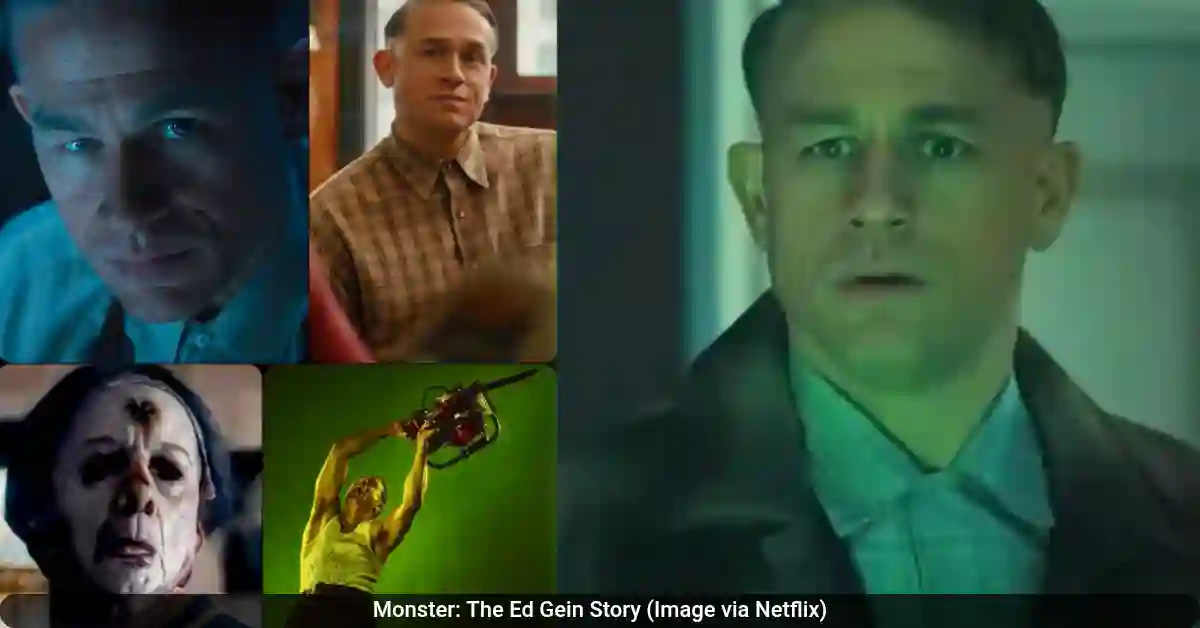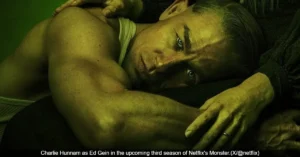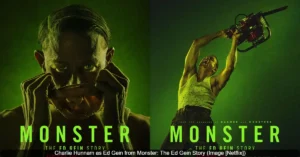The new Netflix series Monster: The Ed Gein Story is looking to do more than just tell a scary true crime story. The show’s co-creator, Ian Brennan, explains that at its core, the series is “a story of mental illness” and an attempt to understand the man behind some of history’s most infamous crimes without being exploitative. The season, which released on October 3, 2025, stars Charlie Hunnam as Ed Gein, the 1950s Wisconsin serial killer whose gruesome actions inspired classic horror films like Psycho, The Texas Chain Saw Massacre, and The Silence of the Lambs.
Brennan, who created the show with Ryan Murphy, stated that the series aims to explore the horror of Gein’s inner life and the “prison that his brain was trapped in.” This approach is part of the Monster anthology’s ongoing mission to question whether monsters are born or made by society, and to turn the camera on the audience itself.
The True Crime Behind the Show
Ed Gein, often called the “Plainfield Ghoul,” was a reclusive farmer confirmed to have killed two women. When police arrested him in 1957, they discovered a house of horrors on his property. The findings included furniture and objects made from human skin and bones, most famously a “woman suit” he confessed to wearing to feel closer to his mother.
The real Ed Gein was diagnosed with schizophrenia and was found not guilty by reason of insanity. He spent the rest of his life in psychiatric hospitals until his death in 1984. The new series delves into his isolated upbringing, his abusive relationship with his deeply religious mother, Augusta, and the mental illness that went untreated.
A Delicate Balance: Humanizing a Killer
A major challenge for the creators was portraying Gein’s humanity without excusing his actions. Brennan described this as walking a “fine line.”
“You’re walking a fine line between showing how this person is human, but how this person is doing absolutely inhuman, deeply strange, and very upsetting things,” Brennan said.
Actor Charlie Hunnam, who underwent a significant transformation for the role, echoed this sentiment, emphasizing the team’s commitment to a truthful portrayal.
“I never felt like we were sensationalizing it. I never felt on set that we did anything gratuitous or for shock impact,” Hunnam said. “It was all in order to try to tell this story as honestly as we could.”
The Question of Who Is the Real Monster
Each season of the Monster series asks the same central question: Who is the real monster? For this season, the answer seems to be multifaceted. The show suggests that the real monster might not just be the killer, but also the society that sensationalizes his crimes and the audience that consumes them.
A pivotal scene in the series sees Ed Gein break the fourth wall, looking directly at the camera and telling the viewer, “You’re the one who can’t look away.” This moment is a clear indictment of our cultural obsession with true crime.
Brennan explained that this season tackles that question most directly.
“This is the [season] that looks at the question most squarely of what happens when you see horrific things,” Brennan said. “It’s also a way for us to turn the camera on ourselves to be like, ‘No, we’re aware that we’re also doing the thing of showing something that maybe you shouldn’t be looking at’.”
The series draws a line from Gein’s crimes to the filmmakers who used them as inspiration, like Alfred Hitchcock for Psycho and Tobe Hooper for The Texas Chain Saw Massacre, and ultimately to the modern audience. Hunnam summarized this complex idea, asking, “Is it Ed Gein… or are we the monster of the show because we’re watching it?”
A Story of Loneliness and Isolation
Beyond the gore, Brennan identifies a more relatable, modern theme at the story’s center: profound loneliness.
“The real monster in the world is loneliness and isolation,” Brennan stated. “Gein is a story of what happens when someone is mentally ill and isolated and alone and male, that’s a really dangerous combination. I think we live in a world where that’s just becoming a pandemic, male loneliness and male violence.”
He noted that while the story is set 75 years in the past, the toxic combination of mental illness and isolation feels very relevant today.
Fact vs. Fiction in the Series
While the show is based on real events, it does take some creative liberties for its narrative. According to fact-checking, some events depicted in the series, like Ed Gein killing his brother Henry, are not confirmed. Authorities ruled Henry’s death an accident. The show also invents a significant romantic relationship for Gein with a character named Adeline Watkins, who is shown encouraging his dark urges.
Other fictionalized elements include scenes of Gein using a chainsaw and a storyline where he helps the FBI catch Ted Bundy, for which there is no historical evidence. The real Gein also denied being a necrophiliac, which is depicted in the series.
Also Read: 11 Best Charlie Hunnam Moments in Monster: The Ed Gein Story That Show His Creative Prowess
Credits: Netflix Tudum










